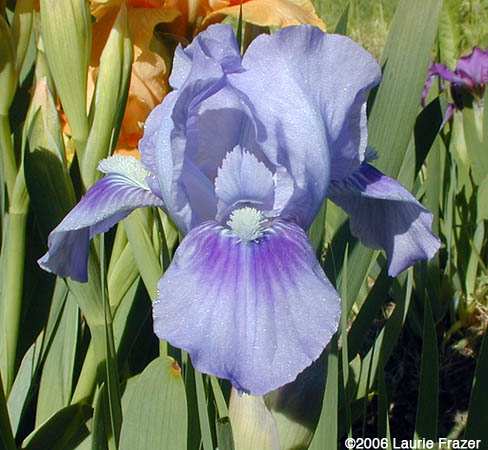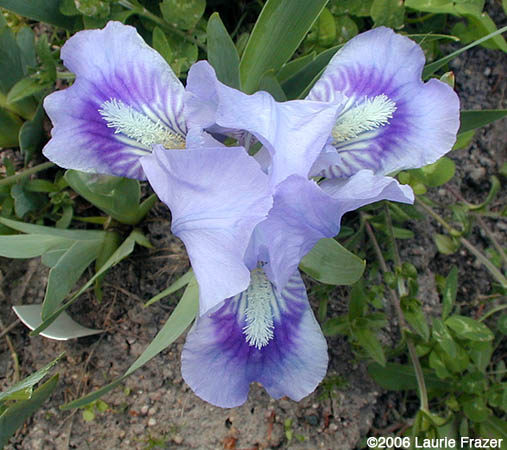

It likely belongs to a group of smaller, delicate iris cultivars, possibly in the miniature or dwarf bearded iris category. The name ‘Tinkerbell’ evokes an image of a dainty and enchanting flower, much like the playful and graceful fairy from folklore. This iris may feature soft pastel hues, such as pink, lavender, or pale yellow, with intricate veining or gentle ruffles along its petals.
Miniature and dwarf irises, often blooming early in the season, are prized for their compact size and vibrant colors, making them perfect for rock gardens, edging pathways, or container planting. These varieties are easy to grow, requiring well-drained soil and full sun to thrive. Their sword-like green foliage remains attractive even after the blooms fade, adding year-round interest to the garden.
Like other irises, ‘Tinkerbell’ may exhibit strong resilience, tolerating a range of climates and requiring minimal maintenance. Whether planted in clusters for a whimsical floral display or combined with other perennials for contrast, this variety would be a charming addition to any garden. Its name suggests a flower that brings a touch of magic and elegance, delighting gardeners and admirers alike.
American Iris Society Registration Data
- Description – S. medium blue, F. dark blue; white beard. Helen McGregor X pumila blue. HM 1957, AM, RHS-BIS 1959; Cook-Douglas Award 1960
- Hybridizer & Year of Introduction – G. Douglas, 1954
- Classification – Standard Dwarf Bearded
- Bloom Period – Early
- Bloom Height – 13″
